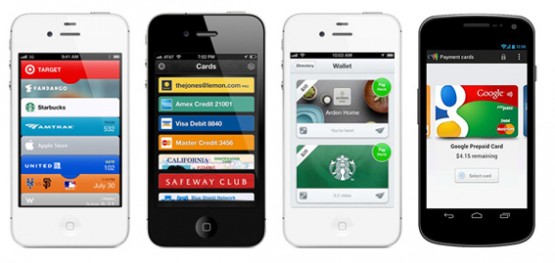Or more so, it’s all about how future users of digital banking programs think about their money, money. Over the past few years many major financial establishment have been digitizing their businesses, offering mobile wallet type apps allowing users to look at their expenses while on the go and perform fundamental functions like transferring money. But beyond glancing at their spending or sending money to others, there was little else the user could do with these apps. Then third party products like Apple’s Passbook, Google Wallet and Square Wallet started offering new ways to purchase products using smart phones.
Since the release of these applications and services, there has been little adoption in part due to market fragmentation, with impracticality coming in close second. Considering all versions of digital cardholders, NFC payment tools, and banking applications, there seemed to be something missing.
Within ten years, Gen Y will make up almost 70% of the work force. To date, the younger group controls some $2 Trillion, yet in eight years they will be in control of $28 Trillion (Barron’s millennials on the rise). Bearing this in mind, companies will do well to get to know their upcoming customers. Unlike their former generations that have a record of financial responsibility and strategic spending, Gen-Y may force banks to re-think their services towards newer, unconventional financial behaviors.
Understanding the Needs of Gen-Y
To better understand Gen-Y, we held a series of user interviews uncovering a series of behavioral patterns. Combined with general market research, we uncovered three “personalities” that best describe this mid to late twenties group.
- The Free-Spirited Shopper—lives in the moment by buying goods for herself and others.
- The Practical Bohemian—spends limited amount of money on finer cultural & health experiences.
- The Budgeted Playboy—careful spender, but likes showing off new-found wealth to others.
What do the three have in common? They’re not big savers. Perhaps the greatest differentiator from past generations is the evolved perception of what it means to invest. An investment to a Gen Y’er is pair of designer shoes that will wear well for 5 years, demonstrate their suave style, and boot their social self-esteem. It’s the generation most likely to invest in travel – a trip to Croatia with 12 buddies will “shape their life experience” and promise memories that can’t be replaced (and Gen Y’ers looooove life experiences).
Research shows Gen Y likes to live in the moment and spends money on their immediate well-being. They enjoy sharing experiences with others and will look to others for guidance when they are uncertain about a financial decision. Although digitally savvy and experts on buying online/offline, Gen-Yers are not early adopters of technology and are also the biggest group that visit brick & mortar bank branches and call centers. They feel comfortable and confident in their spending habits, but the majority of this group is financially illiterate (The cost of financial illiteracy).
Gen-Y Financial Application Opportunities
All things considered, where do we see opportunities for financial groups when creating value products for Gen-Y? As opposed to building another iteration of the mobile wallet, we see more market growth opportunities in the following:
- Creating a recommendation system that’s not in your face, but instead encourages behavior in line with the customers’ goals. Banks will do well to get to know their customer’s goals.
- Increase the feeling of security and control. While Gen Yers like to have auto-pay systems in place, they still prefer to be the command center. Gen Y’ers want to push the “pay” button. Even if reminders are implemented, build systems around the concept of customer control.
- Create a unified platform for group expenses and transactions. Gen Y’ers like to share. Offering a tool that brings visibility to group expenses and provides a platform for peer to peer payment will go far with this group.
- Umbrella financial services, offering many targeted services—from taxes and business solutions to insurance and personal lifestyle. Remember this group is “financially illiterate.” The more supported they feel, the more likely they are to use services offered.
Final Thoughts
So is digitizing your business going to get you Gen-Y customers? It might help, but it’s unlikely to build long–term relationships. Creating an application for monitoring personal finances is a great starting point, but business should consider getting to know their potential users and implementing features catered to user lifestyles, spending styles, and financial goals.
Paul collaborated with Oylum Boran, Jaci Pearse and Pedro Sepulveda to run user research and create this post. This cross-discipline team brings years of experience from different fields to contribute to the New York ustwo™ studio.